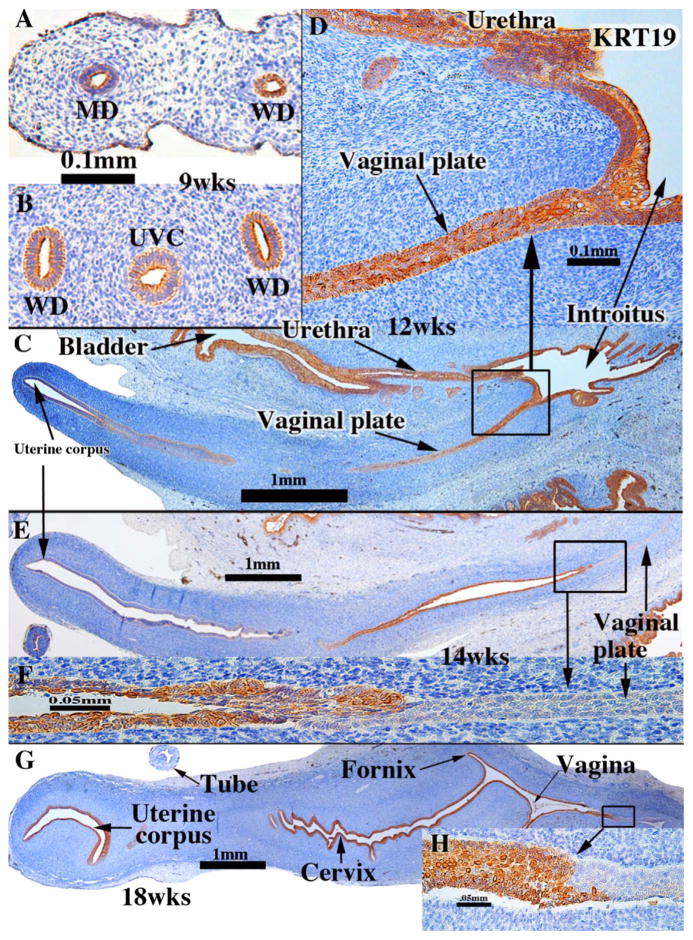Fig. 3.
Keratin 19 immunohistochemistry of human fetal female reproductive tract development. (A & B) Müllerian duct (A) and uterovaginal canal (UVC) in a 9-week human fetus. (C & D) Sagittal Section of the human fetal female reproductive tract at 12 weeks of gestation. KRT19 is expressed in epithelia of the bladder, urethra and most of the female reproductive tract, including the junction of the vaginal plate and the urethra (D). (E & F) Sagittal sections of the human fetal female reproductive tract at 14 weeks of gestation. Note absence of KRT19 staining in the vaginal plate (F). (G & H) Sagittal sections of the human fetal female reproductive tract at 18 weeks of gestation. Strong KRT19 staining is observed in the cervical region, and now the vaginal plate exhibits weak to moderate KRT19 staining. (H) KRT19 staining is seen in the vagina, even though the most caudal vaginal epithelium is KRT19-negative.

